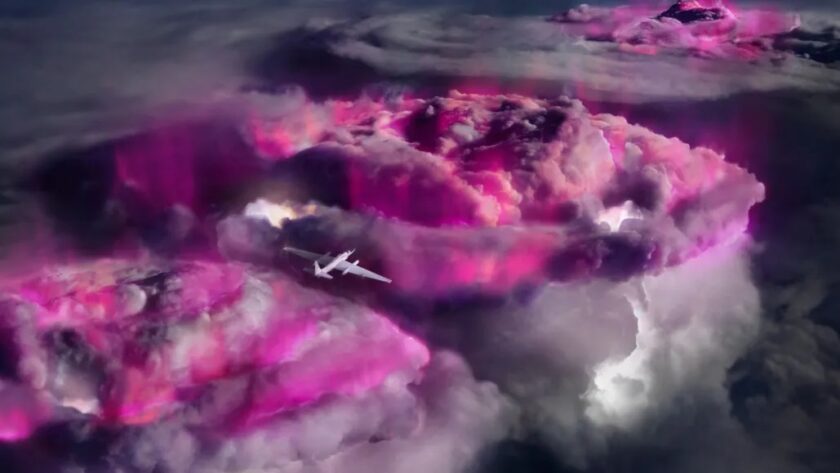
A view from a retrofitted spy plane reveals complex emissions of high-energy light
Above the cloud tops, thunderstorms throb with a complex, frenetic light show of high-energy radiation.
A view from a retrofitted spy plane soaring at 20 kilometers up revealed storms glowing and flickering in gamma rays, high-energy light invisible to the eye. Ten flights with the plane, NASA’s ER-2 aircraft, captured the shimmer of gamma-ray outbursts over a variety of timescales and intensities, suggesting that the emissions are more complex and more common than previously thought. And the study unveiled a brand-new type of gamma-ray blast the researchers named a flickering gamma-ray flash.
“I’m absolutely awestruck,” says physicist David Smith, of the University of California, Santa Cruz, who was not involved with the research. It’s most important new data in this field for over a decade, he says.
Scientists knew of two main types of thunderstorm gamma-ray emissions. Short, intense blasts called terrestrial gamma-ray flashes are so luminous they can be seen from space, and last for mere fractions of a millisecond. Then there are longer, dimmer emissions called gamma-ray glows. Scientists spotted both on the flights.
Glows, the scientists found, were unexpectedly persistent and prevalent. They continued for hours, covered thousands of square kilometers, and were seen in nine of the plane’s 10 flights, physicist Nikolai Østgaard and colleagues report in the Oct. 3 Nature.
“It’s astonishing,” says physicist Ningyu Liu of the University of New Hampshire in Durham, who was not involved with the work.
What’s more, the gamma-ray glows weren’t static, as previously thought, but constantly simmered, brightening and dimming repeatedly on timescales of seconds. “Large storms are bubbling. It’s like a boiling pot,” says Østgaard, of the University of Bergen in Norway.
Loaded up with sensors to detect gamma rays, radio waves, visible light and more, the aircraft flew over storms in the Caribbean and Central America. Cruising at an altitude about twice that of commercial flights, the plane had a front-row seat to the fireworks. And because the plane was rigged up to send data to the ground in real time, researchers could direct the plane’s pilot to return to regions that were hopping with gamma rays.
The flights also found terrestrial gamma-ray flashes, including many too dim to be seen from satellites in space, the team reported September 7 in in Geophysical Research Letters. That suggests that previous satellite observations were missing many terrestrial gamma-ray flashes, making them more common than thought.
Thunderstorms produce gamma rays when electrons get accelerated in strong electric fields that build up inside the clouds. These electrons produce more electrons, and so on. When electrons in this avalanche collide with air molecules, gamma rays result. But although this process is well understood, scientists don’t understand the details behind the different types of gamma-ray outbursts, or how they are related.
The newfound flickering gamma-ray flashes could be a missing link between terrestrial gamma-ray flashes and gamma-ray glows, as their brightness and duration fell in between those of the other two classes. Like high-energy strobe lights, these outbursts consisted of short pulses of gamma rays that repeated over tens to hundreds of milliseconds, the team reported in a second paper in Nature.
In addition, many of the flickering gamma-ray flashes were followed by a type of outburst called a narrow bipolar event, which was then followed by lightning. This could mean that the flickering gamma-ray flashes help initiate lightning, a process that is still not understood.
